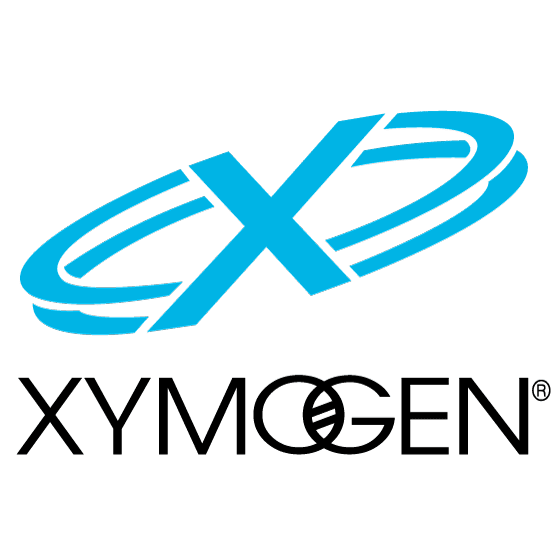Neural cell death can occur both during the development and throughout the pathophysiology of the nervous system. Two different types of cell death, known as necrosis and apoptosis, are involved in pathological neuronal loss, however, apoptosis is the process of programmed cell death during development. All types of cells will go through apoptosis. This mechanism controls neuronal growth where an excess of neurons is produced and only those which form connections with the target structures will receive enough survival factors. The remaining neurons will then ultimately go through death and removal.
Apoptosis continues throughout life and it is the main process involved in the elimination of surplus, unwanted, damaged or aged cells. Dysregulation of apoptosis is demonstrated after damage or injury as well as in neurodegeneration and in tumorigenesis. Treatment approaches which influence the apoptotic pathway offer valuable therapeutic options in a wide variety of pathological states. The purpose of the article is to describe the significance of apoptosis in neurological diseases.
Table of Contents
What is Apoptosis?
Apoptosis is the well-conserved and highly controlled process of cell death involved in the removal of unnecessary, surplus, aged or damaged cells. Dysregulation of apoptosis can ultimately develop mutated cells which can result in malformations, autoimmune diseases, and even cancer. Abnormal apoptosis can also result in the elimination of healthy cells which can occur in health issues such as infection, hypoxic-ischaemic injury, neurodegenerative or neuromuscular diseases, and AIDS.
Apoptosis is different from necrotic cell death. In necrosis, cell death is caused by an external factor and involves the early loss of tissue, damage to organs, and the leakage of cytoplasmic contents, leading to the recruitment of phagocytes which can cause an acute inflammatory reaction. In contrast, apoptosis is often considered cell suicide. According to research studies, cells which die due to apoptosis retain membrane and organelle structure and function until late in the process while still developing plasma membrane blebbing, reduced cytoplasmic volume, chromatin condensation, and nuclear fragmentation.
In the final phases, cell fragments wrapped in plasma membrane pull away as apoptotic bodies which are then phagocytosed by healthy cells. The removal of cell debris also occurs in the absence of an inflammatory response, and this silent, quick, and efficient elimination of apoptotic cells mean that apoptosis can be difficult to find in cells. However, as many as 50 percent of the cells in developing adulthood may go through apoptosis where less than 1 percent of cells are apoptotic at any one time.
Apoptosis in the Nervous System
Programmed cell death by apoptosis occurs in several developmental processes, such as body sculpting and removal of self-reacting resistant cells as well as sexual organ growth and gamete formation. The general principle of growth in multicellular organisms involves the development of excess numbers of cells, where the excess or unwanted cells are then removed by apoptosis through the development of functional organs. In the developing nervous system, apoptosis has been demonstrated to occur in neural tube formation and continues throughout terminal differentiation of the neural system.
A growing number of neurotrophic factors, such as nerve growth factor family, including both the neurokines and development factors like insulin-like growth variables (IGF-I and IGF-II), encourage the survival of several types of neurons. Targeted disruption of genes encoding these factors or their receptors demonstrate that neurotrophic factors are significant for the development of specific neuronal populations. Neurotrophic factors function by binding to specific receptors in the cell membrane. Moreover, the effects of NGF offer a good illustration of the subtle command the system permits.
The nerve growth factor receptor has high and low affinity components. It will function as a survival factor if it binds to the high-affinity trkA receptor but it will also cause apoptosis of retinal neurons or oligodendrocytes once it binds to the low-affinity receptor p75 in the absence of trkA. Nerve growth factor in the extracellular environment is consequently able to control neural development by both boosting the growth of several types of cells as well as the removal of other cells.
In some cases, however, concentrated genetic disruption of neurotrophic factors or their receptors may leave the central nervous system seemingly unaffected, demonstrating that these variables can ultimately become biased. According to research studies, it has now become evident that the control of neuronal survival does not only depend on the supply of trophic molecules by the targets but also on activity, humoral factors, and trophic support from glia or glial cells.
Furthermore, neurons don’t simply undergo programmed cell death during differentiation. Apoptosis appears to regulate cell numbers in systems as diverse as the disappearance of the germinal layer during the third trimester of pregnancy, the sexual differentiation of the medial preoptic nucleus where apoptosis is controlled by testosterone, lineages throughout the olfactory epithelium, oligodendrocyte development in the optic nerve, and the development of Schwann cells in the peripheral nervous system. Programmed cell death occurs in a variety of other processes in the developing nervous system.
Apoptosis in Nervous System Injuries & Diseases
Although apoptosis is a fundamental process involved in the developing nervous system, apoptosis can ultimately be involved in a variety of nervous system injuries and diseases. In most cases, the connection between a specific mutation or trauma as well as the activation of apoptotic cascades remains evasive. An overview of a developing list of neurological diseases in which apoptosis has been implicated as a significant pathological mechanism is provided below.
Neuronal Injury
Cerebral hypoxic-ischaemic injury is a cause of neurological injury and death. Magnetic resonance spectroscopy studies have demonstrated that transient hypoxia-ischemia contributes to a biphasic disturbance of cerebral energy metabolism. Related to the biphasic energy collapse, two waves of cell death appear to follow hypoxic-ischaemic injury in the developing brain. Immediate neuronal death is most likely due to necrosis resulting from the accumulation of calcium ions.
Delayed cell death caused by hypoxic-ischemic injury appears to involve further mechanisms with increasing data which demonstrates that in the delayed phase, cell death occurs by apoptosis. The amount of apoptosis is directly associated with the magnitude of ATP depletion during hypoxia-ischemia. Apoptosis can occur in the brains of newborn babies following birth asphyxia and sudden intrauterine death. Apoptosis can also be notable in white matter injury in newborn babies.
Apoptosis may continue for months after an hypoxic-ischaemic injury due to constant changes in cerebral energy metabolism in infants during the months after birth asphyxia. Following focal neural injury, apoptosis has been discovered in remote regions from the initial damage. After severe spinal cord injury in reptiles, apoptosis of oligodendrocytes occurs in distant degenerating fiber tracts and after forebrain injury in rats, apoptosis was demonstrated in the cerebellum.
The apoptotic loss of oligodendrocytes could consequently be a potential source of secondary demyelination in paraplegia and in the chronic degeneration related to multiple sclerosis. Further research studies must be performed in order to provide further evidence on the role of apoptosis in this type of injury which begins from the report of which Bcl-2 expression boosts the growth and regeneration of retinal axons. Apoptosis in neuronal injury can be demonstrated in a variety of ways.
Neural Cancers
A connection between apoptosis and the cell cycle is demonstrated in carcinogenesis where proto-oncogenes, such as c-fos, c-jun, and c-myc, can activate apoptosis and promote cell division while inactivation of the pro-apoptotic p53 tumor suppressor gene is a frequent mark of human neoplasia. By way of instance, in a number of gliomas, the reduction of wild p53 activity was connected to tumor progression, possibly leading to resistance to chemotherapy and radiotherapy.
Although there have been reports of Bcl-2 overexpression in glioma cell lines, the correlation between the anti-apoptotic effect of this gene and malignancy is not yet clear. However, a homolog of Bcl-2, the brain associated apoptosis gene (BRAG-1), is found predominantly in the brain, and it is upregulated in human gliomas as a rearranged transcript. As demonstrated above, the process of apoptosis can also be significant in the development of neural cancers, according to research studies.
Infectious Disease
Apoptosis may play a role in HIV encephalopathy. In the brain, the virus reproduces primarily in microglia which it enters through the CD4 receptor. Although the activation of microglia is believed to be the main reason for adrenal loss and demyelination, neurons die by apoptosis in HIV encephalopathies because of HIV mediated alterations in astrocyte function and aberrant stimulation of NMDA receptors or due to nitric oxide from the activation of inducible nitric oxide synthase.
In subacute sclerosing panencephalitis, widespread apoptotic death was demonstrated to develop in the brain, although no correlation was observed between viral load, lymphocyte infiltration, and the number of apoptotic cells. DNA fragmentation indicative of apoptosis was detected in scrapie-infected sheep and mice brains, suggesting a function associated with cell death in spongiform encephalopathies. Apoptosis may also ultimately be involved in another infectious disease.
Neurodegeneration
Spinal muscular atrophy is associated with mutations in the survival of motor neuron and neuronal apoptosis inhibitory protein (NAIP) enzymes. NAIP is closely related to the baculovirus inhibitor of apoptosis protein and inhibits apoptosis in many cell types. This implies that mutations in NAIP could deregulate apoptosis in spinal motor nerves, causing their death. Recent studies emphasize the importance of anti-apoptotic genes in cerebral protection which can rescue neurons.
Apoptosis has also been implicated in retinal dystrophies such as retinitis pigmentosa. In this case, apoptosis results from mutations in the three photoreceptor genes, rhodopsin, peripherin, and the ?-subunit of cyclic guanosine monophosphate di esterase, resulting in photoreceptor degeneration. The absence of c-fos prevents apoptosis in those cells is unknown. Moreover, defined neurotrophins and growth factors injected intraocularly in animal models of retinal degeneration improve photoreceptor survival, suggesting that the apoptotic cascade can be obstructed by supplying exogenous survival signs.
The mutation underlying Huntington’s disease is an expanded trinucleotide which is fundamental for normal development and can be regarded as a cell survival gene. Transgenic models demonstrated increased apoptosis in the neurons of an embryonic neuroectoderm. During apoptosis, caspase-3 (apopain) is improved by a gain of function associated with the triplet expansion. This is supported by the overexpression of specific trinucleotide repeats in transgenic mice.
Most cerebellar ataxias are associated with neuronal loss. Ataxia-telangiectasia, caused by mutations in the ATM gene, is considered to have an apoptotic component. ATM shares extensive and significant homology with the DNA dependent protein kinases involved in DNA damage responses at different cell cycle checkpoints and is downregulated in most patients with ataxia-telangiectasia. The simple fact that inappropriate p53 mediated apoptosis is the major cause of death in ataxia-telangiectasia cells suggests that the mutation causes improper triggering of apoptosis by otherwise non-lethal DNA injury.
From the familial form of amyotrophic lateral sclerosis gain of function, mutations in the gene encoding copper-zinc superoxide dismutase (sod-1) develop a dominant pro-apoptotic sign. Although cell harm by the accumulation of free radicals can trigger apoptosis, these mutants can induce apoptosis both in nerve cells in culture and in transgenic mice. Mental retardation in Down’s syndrome has also been associated with abnormal apoptosis. Although cortical neurons from fetal Down’s syndrome brains are different, they then degenerate and undergo apoptosis, according to research studies.
Degeneration is blocked by treatment with free radical scavengers, suggesting that a defect in the metabolism of reactive oxygen species is the trigger for apoptosis. In Parkinson’s disease, the death of dopaminergic neurons in the substantia nigra was demonstrated to occur through apoptosis and may be obstructed by delivery of glial-derived neurotrophic factor. Alzheimer’s disease is associated with the progressive accumulation of ?-amyloid protein which is the fundamental component of neural plaques. The ?-amyloid peptide can cause neurons to undergo apoptosis in vitro research studies.
Inherited Metabolic Disease
Furthermore, few data suggest that the acute encephalopathy associated with maple syrup urine disease is because of the induction of apoptosis by an accumulating metabolite of leucine, ?-keto isocaproic acid. This compound is a potent inducer of apoptosis in central nervous system glial cells and the result is significantly enhanced in the presence of leucine. Phenylalanine and leucine do not induce apoptosis in this system, suggesting that this result is ultimately unique.

There are two ways in which a cell can die, necrosis and apoptosis. While necrosis occurs due to an external factor which harms the cell, apoptosis follows a controlled, predictable routine. Apoptosis is generally known as programmed cell death. Apoptosis, or programmed cell death, has many fundamental functions in the developing structures of the human body, however, research studies have demonstrated that abnormal apoptosis can be associated with the development of a variety of neurological diseases. – Dr. Alex Jimenez D.C., C.C.S.T. Insight
Diet and Exercise for Neurological Disease
The purpose of the article above is to discuss the process of apoptosis, or cell death, in neurodegenerative diseases. Neurological diseases are associated with the brain, the spine, and the nerves. The scope of our information is limited to chiropractic, musculoskeletal and nervous health issues as well as functional medicine articles, topics, and discussions. To further discuss the subject matter above, please feel free to ask Dr. Alex Jimenez or contact us at 915-850-0900 .
Curated by Dr. Alex Jimenez
Additional Topic Discussion: Chronic Pain
Sudden pain is a natural response of the nervous system which helps to demonstrate possible injury. By way of instance, pain signals travel from an injured region through the nerves and spinal cord to the brain. Pain is generally less severe as the injury heals, however, chronic pain is different than the average type of pain. With chronic pain, the human body will continue sending pain signals to the brain, regardless if the injury has healed. Chronic pain can last for several weeks to even several years. Chronic pain can tremendously affect a patient’s mobility and it can reduce flexibility, strength, and endurance.
Formulas for Methylation Support
XYMOGEN’s Exclusive Professional Formulas are available through select licensed health care professionals. The internet sale and discounting of XYMOGEN formulas are strictly prohibited.
Proudly, Dr. Alexander Jimenez makes XYMOGEN formulas available only to patients under our care.
Please call our office in order for us to assign a doctor consultation for immediate access.
If you are a patient of Injury Medical & Chiropractic Clinic, you may inquire about XYMOGEN by calling 915-850-0900.
For your convenience and review of the XYMOGEN products please review the following link.*XYMOGEN-Catalog-Download
* All of the above XYMOGEN policies remain strictly in force.
Post Disclaimer
Professional Scope of Practice *
The information herein on "Apoptosis in Neurological Diseases" is not intended to replace a one-on-one relationship with a qualified health care professional or licensed physician and is not medical advice. We encourage you to make healthcare decisions based on your research and partnership with a qualified healthcare professional.
Blog Information & Scope Discussions
Our information scope is limited to Chiropractic, musculoskeletal, acupuncture, physical medicines, wellness, contributing etiological viscerosomatic disturbances within clinical presentations, associated somatovisceral reflex clinical dynamics, subluxation complexes, sensitive health issues, and/or functional medicine articles, topics, and discussions.
We provide and present clinical collaboration with specialists from various disciplines. Each specialist is governed by their professional scope of practice and their jurisdiction of licensure. We use functional health & wellness protocols to treat and support care for the injuries or disorders of the musculoskeletal system.
Our videos, posts, topics, subjects, and insights cover clinical matters, issues, and topics that relate to and directly or indirectly support our clinical scope of practice.*
Our office has reasonably attempted to provide supportive citations and has identified the relevant research studies supporting our posts. We provide copies of supporting research studies available to regulatory boards and the public upon request.
We understand that we cover matters that require an additional explanation of how it may assist in a particular care plan or treatment protocol; therefore, to further discuss the subject matter above, please feel free to ask Dr. Alex Jimenez, DC, or contact us at 915-850-0900.
We are here to help you and your family.
Blessings
Dr. Alex Jimenez DC, MSACP, RN*, CCST, IFMCP*, CIFM*, ATN*
email: coach@elpasofunctionalmedicine.com
Licensed as a Doctor of Chiropractic (DC) in Texas & New Mexico*
Texas DC License # TX5807, New Mexico DC License # NM-DC2182
Licensed as a Registered Nurse (RN*) in Florida
Florida License RN License # RN9617241 (Control No. 3558029)
Compact Status: Multi-State License: Authorized to Practice in 40 States*
Presently Matriculated: ICHS: MSN* FNP (Family Nurse Practitioner Program)
Dr. Alex Jimenez DC, MSACP, RN* CIFM*, IFMCP*, ATN*, CCST
My Digital Business Card





 Again We Welcome You¸
Again We Welcome You¸
